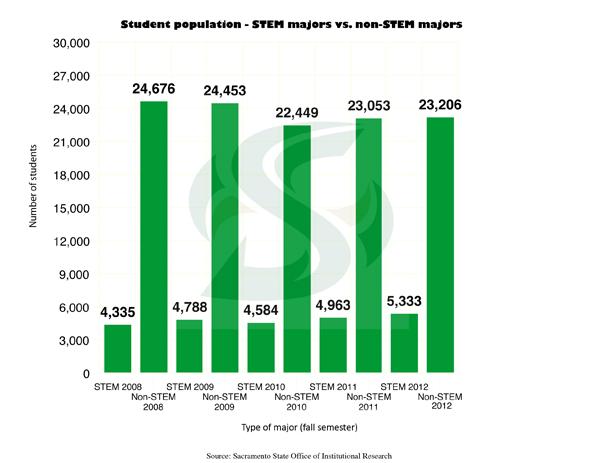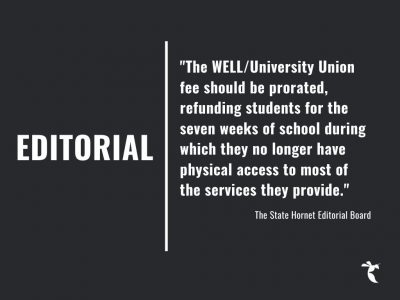EDITORIAL: STEM degrees are beneficial for the nation

May 15, 2013
Without scientific research, we would still believe the Earth is flat, the center of the universe and only 6,000 years old. Doctors would not sterilize their hands between handling corpses and performing surgery.
The number of science, technology, engineering and mathematics (STEM) degrees are not at the level they need to be in order to fill the jobs that demand such qualifications. However, even when unemployment is still at 9.4 percent in California, a significant amount of STEM jobs remain unfilled due in part to the lack of STEM degrees being awarded.
According to the National Science Foundation, STEM bachelor’s degrees have consistently represented a third of all bachelor’s degrees in the U.S. since 1991. However, that statistic is significantly lower at Sacramento State, though it has been slowly rising.
According to the Office of Institutional Research, when the recession hit in 2008, both undergraduate and graduate students enrolled in STEM classes consisted of 4,335 (15 percent) of the 29,011 students enrolled at the time. Between 2008 and 2012the number of undergraduate STEM students reached 19 percent while the amount of graduate STEM students actually fell to 13 percent of the overall student body
As of 2012, the total amount of STEM students at Sac State, as of 2012 is 5,333 out of 28,539 students, or 18.7 percent. This is far below the average demographics of the rest of America’s universities.
Even if Sac State was at the same level as the national average, it still might not be enough to fill the gap in the job market – a gap so large that enough people are immigrating into the U.S. to fill these vacant jobs at such a rate that the situation warranted government legislation.
The House of Representatives passed the “STEM Jobs Act” last November. The bill aims to reorganize how STEM educated foreigners are accepted for green cards while also adding another 55,000 green cards to be admitted into the country. Doctors and doctoral students would be accepted first, with master’s students getting any leftover green cards.
Not only are STEM jobs affected, but scientific research seems to be taking a hit from the job drought as well. NASA, an organization designed entirely around exploration and research, is a fantastic example of how a combination of how this job drought, in combination with the recession, has impacted scientific research.
NASA scientists have developed a vast array of technologies – from the lasers used in Lasik eye surgery to better prosthetics to even something as commonplace as memory-foam mattresses. However, even with its contributions, the Guardian published a chart detailing NASA’s budget as a miniscule percentage of the federal budget since its inception.
At 0.5 percent, NASA funding is the lowest it has ever been since 1960. One of the side effects of these budget cuts was the permanent retiring of the space shuttle and cutting the NASA staff down to size.
Not all is bleak, though. In the AFL-CIO fact sheet for last year, the union reported steady, fast growth in STEM fields, with 24.8 percent of the union’s workers in a STEM job. It’s still a buyer’s market with STEM jobs, but every day there are less STEM job available.
So get out there and study the universe.








































































































































